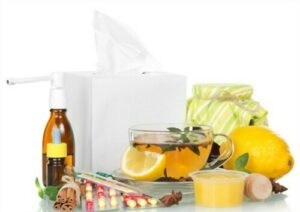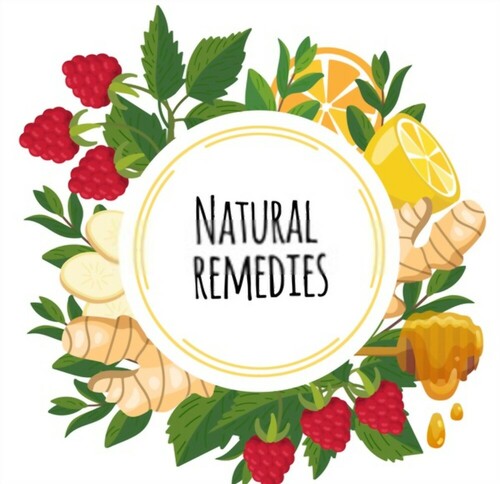We are now firmly in the grip of Autumn with winter just around the corner. Days are getting shorter and temperatures are getting colder. Windows are being kept closed to keep out the cold and damp, and people are now socialising inside which is excellent news for our old adversary, the common cold.
 Despite the extra precautions which we applied during the Covid-19 epidemic including restricted social interactions, the wearing of face masks and the constant washing of hands, most of these have been forgotten as the epidemic has subsided and enforced precautions dropped, all of which had kept the common cold at bay over the past couple of years. With the lack of exposure to respiratory ailments due to covid restrictions, and the likely diminished overall immunity which social distancing caused, the common cold is predicted to be rife this year.
Despite the extra precautions which we applied during the Covid-19 epidemic including restricted social interactions, the wearing of face masks and the constant washing of hands, most of these have been forgotten as the epidemic has subsided and enforced precautions dropped, all of which had kept the common cold at bay over the past couple of years. With the lack of exposure to respiratory ailments due to covid restrictions, and the likely diminished overall immunity which social distancing caused, the common cold is predicted to be rife this year.
What is the Common Cold?
The common cold is a minor viral infection of the respiratory tract (mostly upper i.e. nose and throat) which can be caused by over 200 different viruses, the most common of which is rhinovirus which accounts for up to 40% of colds. Other common cold viruses include coronaviruses which account for up to 20% of colds, and respiratory syncytial virus (RSV) which infects the lungs and upper respiratory tract and can develop into a severe infection such as pneumonia or bronchiolitis, particularly in infants and the elderly.
 The common cold is highly contagious and is spread by a single droplet containing the virus which is inhaled or transferred after touching a contaminated item. On average symptoms start to appear one to three days after exposure. Common symptoms include a runny or stuffy nose, sneezing, congestion, sore throat, a weakened sense of smell and taste, low-grade fever, sinus headache and a cough. Most people suffer from a head cold which gives symptoms such as watery eyes, sneezing, nasal congestion and headache, but it is also possible to have a chest cold with congestion in the chest and a strong cough, or even both! Symptoms of the common cold generally last for three to seven days, with or without medication, but it can take longer to fully recover. In some cases the symptoms alone can linger for up to two weeks with a prolonged recovery period, particularly in the very young, elderly and those in poor health. Since a cold impairs your immunity, it also increases the risk of a bacterial infection taking hold, such as sinus or ear infections and acute bronchitis. A very common complication following a cold is a sinus infection with a prolonged cough.
The common cold is highly contagious and is spread by a single droplet containing the virus which is inhaled or transferred after touching a contaminated item. On average symptoms start to appear one to three days after exposure. Common symptoms include a runny or stuffy nose, sneezing, congestion, sore throat, a weakened sense of smell and taste, low-grade fever, sinus headache and a cough. Most people suffer from a head cold which gives symptoms such as watery eyes, sneezing, nasal congestion and headache, but it is also possible to have a chest cold with congestion in the chest and a strong cough, or even both! Symptoms of the common cold generally last for three to seven days, with or without medication, but it can take longer to fully recover. In some cases the symptoms alone can linger for up to two weeks with a prolonged recovery period, particularly in the very young, elderly and those in poor health. Since a cold impairs your immunity, it also increases the risk of a bacterial infection taking hold, such as sinus or ear infections and acute bronchitis. A very common complication following a cold is a sinus infection with a prolonged cough.
Common Cold vs. Flu
The flu is caused by the influenza virus. It has very similar symptoms so it may first be mistaken for a common cold. However, whereas a cold develops more slowly, the flu virus usually hits you at full speed from out of nowhere, and presents further symptoms such as a fever over 100.4 degrees F (38 degrees C), chills and sweats, aching muscles, malaise (a general feeling of being unwell), plus fatigue and weakness. Although most people recover from flu on their own, it is much more serious than the common cold as it has the potential to cause complications, and can even be deadly in certain high-risk groups.
Treating the Common Cold
Here’s the thing, there is no cure for the common cold. Antibiotics are antibacterial agents, and as we’ve already mentioned the common cold is viral. However you can find relief by easing the symptoms.
Over the Counter Medication for the Common Cold
 Nasal decongestants: help to unblock a congested nose by narrowing the blood vessels in the lining of the nose and reducing inflammation of the swollen tissues and decreasing mucus production to promote easier breathing.
Nasal decongestants: help to unblock a congested nose by narrowing the blood vessels in the lining of the nose and reducing inflammation of the swollen tissues and decreasing mucus production to promote easier breathing.
Cough suppressants: work by blocking the nerve impulse that causes the cough reflex and can provide short-term relief. Whilst genuine coughing has a useful function since it dispels mucus, contaminates and air, it is also a reflex action which can be unnecessarily triggered, and be highly disruptive to daily life and particularly sleep.
Expectorants: help to thin and loosen mucus so that it may be dispelled easier and allows the excess mucus to be eliminated quicker.
Antihistamines: block the release of histamine which the body automatically releases when exposed to an allergen, and thereby prevents symptoms such as sneezing, itching eyes, watery eyes, nasal discharge, coughing. Some antihistamines may cause drowsiness.
Pain relievers: help to alleviate pain associated with a cold such as a headache, sore throat, earache.
Warning: since each product only treats one type of symptom it may be necessary to take more than one kind of medication at the same time. Great care should be taken to check the ingredients to ensure that an ingredient is not present in both medications which could cause an accidental overdose. Extra caution is particularly required when administering over the counter medication to children as it is very easy to give too much. Some of these medications can have serious side-effects if too much is taken, for instance liver damage, and accidental overdoses can even be fatal. Note that nasal decongestants are also not recommended for children under the age of seven, and aspirin should never be given to a child. Chemical nasal decongestants are also not recommended with high blood pressure, and in any event should not be used for longer than three days as prolonged use can cause chronic inflammation of the mucus membranes.
Natural Common Cold Remedies
The great news is that there are plenty of natural remedies available, often helping to alleviate a multitude of symptoms quickly, and without the worry of an accidental overdose or pumping unnecessary chemicals into your body. So what natural common cold remedies are available?
Black Seed Oil for the Fast Relief and Prevention of the Common Cold
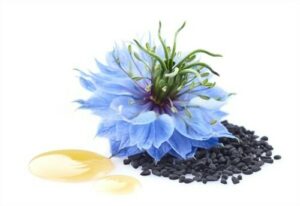 Simply the jack of all trades, inimitable black seed oil was described as the remedy to all ailments except death, with very good reason. The perfect health tonic, a teaspoon a day should be included in the diet of anyone who cares about their health, and will form the first line of defence to protect against the common cold in the first place. Containing powerful phytochemicals including thymoquinone, thymohydroquinone and thymol, black seed oil a natural immunomodulator to give the immune system a powerful boost, and possesses analgesic, antibacterial, antiviral, antihistamine and anti-inflammatory properties, making it a great preventative aid as well as the perfect tool to help fight and reduce the symptoms of the common cold. Furthermore it protects against a secondary viral or bacterial infection, such as pneumonia, whilst the immune system is compromised by the cold virus. Black seed oil has a long history of use for the respiratory tract, and studies have confirmed that it can inhibit inflammation of the respiratory airways and sinuses, reduce nasal and chest congestion, and reduce pain such as a headache, sore throat, earache and neck pain.
Simply the jack of all trades, inimitable black seed oil was described as the remedy to all ailments except death, with very good reason. The perfect health tonic, a teaspoon a day should be included in the diet of anyone who cares about their health, and will form the first line of defence to protect against the common cold in the first place. Containing powerful phytochemicals including thymoquinone, thymohydroquinone and thymol, black seed oil a natural immunomodulator to give the immune system a powerful boost, and possesses analgesic, antibacterial, antiviral, antihistamine and anti-inflammatory properties, making it a great preventative aid as well as the perfect tool to help fight and reduce the symptoms of the common cold. Furthermore it protects against a secondary viral or bacterial infection, such as pneumonia, whilst the immune system is compromised by the cold virus. Black seed oil has a long history of use for the respiratory tract, and studies have confirmed that it can inhibit inflammation of the respiratory airways and sinuses, reduce nasal and chest congestion, and reduce pain such as a headache, sore throat, earache and neck pain.
How to use
Orally: Take 1 teaspoon every morning (may be added to honey to improve taste and soothe a sore throat). Do not mix with hot water to preserve the nutrients.
Topically: Apply a few drops directly to the skin to reduce redness and inflammation and soothe that red nose and dry cracked lips.
Essential Oils for Colds
Of course, we can’t forget about essential oils when looking for quick and natural cold remedies. Here’s the top of the crop for their cold-fighting abilities:
Eucalyptus Essential Oil for the Fast Relief of the Common Cold
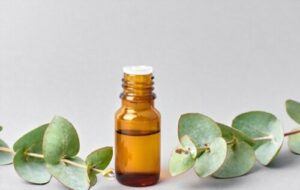 It’s no coincidence that eucalyptus essential oil is a key ingredient in most chest rubs. Its main component, 1,8-cineole, helps to fight viruses and inflammation, and eucalyptus has a long history in the treatment of the common cold, bronchitis, sinusitis, and chronic obstructive pulmonary disease (COPD). As a natural decongestant with proven antibacterial and antiviral properties, it reduces chest inflammation, clears the sinuses, alleviates coughing, and helps to promote easier breathing. With its cooling properties, it can also be used as a cold compress to reduce a fever, and alleviate muscle aches and a headache.
It’s no coincidence that eucalyptus essential oil is a key ingredient in most chest rubs. Its main component, 1,8-cineole, helps to fight viruses and inflammation, and eucalyptus has a long history in the treatment of the common cold, bronchitis, sinusitis, and chronic obstructive pulmonary disease (COPD). As a natural decongestant with proven antibacterial and antiviral properties, it reduces chest inflammation, clears the sinuses, alleviates coughing, and helps to promote easier breathing. With its cooling properties, it can also be used as a cold compress to reduce a fever, and alleviate muscle aches and a headache.
Recommended usage: Diffuser, steam inhalation, chest rub, cold compress, massage, in the bath.
Peppermint Essential Oil for the Fast Relief of the Common Cold
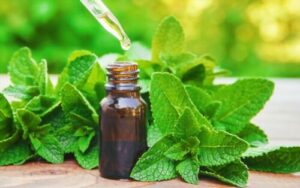 Peppermint essential oil possesses antiviral, antibacterial and antiseptic properties, is a natural decongestant, and is extremely cooling. It contains menthol, a chemical which has long been recognized for its effectiveness against respiratory tract infections since it has a positive effect on mucus receptors in the nasal cavity, lessens mucus, reduces irritation and subsequently clears the airways, thus promoting easier breathing. Menthol is a key ingredient in many cough lozenges, since it is able to reduce inflammation and irritation, loosen chest congestion and break up phlegm, thus reducing coughing and soothing a sore throat, in addition to helping the bronchial muscles during a bout of coughing. As a muscle relaxant it is ideal for treating aching muscles, a stiff neck, and headache. Peppermint also reduces dizziness, nausea, and the feeling of fatigue, and its strong cooling properties are perfect to alleviate a fever.
Peppermint essential oil possesses antiviral, antibacterial and antiseptic properties, is a natural decongestant, and is extremely cooling. It contains menthol, a chemical which has long been recognized for its effectiveness against respiratory tract infections since it has a positive effect on mucus receptors in the nasal cavity, lessens mucus, reduces irritation and subsequently clears the airways, thus promoting easier breathing. Menthol is a key ingredient in many cough lozenges, since it is able to reduce inflammation and irritation, loosen chest congestion and break up phlegm, thus reducing coughing and soothing a sore throat, in addition to helping the bronchial muscles during a bout of coughing. As a muscle relaxant it is ideal for treating aching muscles, a stiff neck, and headache. Peppermint also reduces dizziness, nausea, and the feeling of fatigue, and its strong cooling properties are perfect to alleviate a fever.
Recommended usage: Diffuser, steam inhalation, chest rub, cold compress, massage. Not recommended for use in the bath.
Frankincense Essential Oil for the Fast Relief of the Common Cold
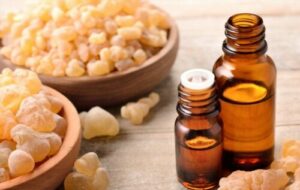 Frankincense essential oil has antiseptic, astringent and anti-inflammatory properties, in addition to being a natural expectorant, and having strong immunostimulant activity. It has long been used in the treatment of respiratory ailments and is particularly effective for bronchitis and extreme coughing. Frankincense oil helps to breakdown mucus and expels it, thus reducing congestion in the respiratory tract and sinuses.
Frankincense essential oil has antiseptic, astringent and anti-inflammatory properties, in addition to being a natural expectorant, and having strong immunostimulant activity. It has long been used in the treatment of respiratory ailments and is particularly effective for bronchitis and extreme coughing. Frankincense oil helps to breakdown mucus and expels it, thus reducing congestion in the respiratory tract and sinuses.
Recommended usage: Diffuser, steam inhalation, chest rub, cold compress, massage. Not recommended for use in the bath.
How to Use Essential Oils to Reduce the Symptoms of a Cold
 Steam inhalation: Add 1 drop to a bowl of steaming water. Steam with a towel over your head for 2 to 5 minutes to clear a stuffy nose and help break up chest and nasal congestion. Take care not to place your face too close to the steaming water as it can scald you.
Steam inhalation: Add 1 drop to a bowl of steaming water. Steam with a towel over your head for 2 to 5 minutes to clear a stuffy nose and help break up chest and nasal congestion. Take care not to place your face too close to the steaming water as it can scald you.
Apply topically: On the chest and back to help reduce fever. Under the nose to clear a stuffy nose and reduce a cough. On the forehead to reduce a headache and relieve tension. Around the throat to relieve a sore throat. Always dilute by adding to a carrier oil, aloe vera, or some shea butter. Note: Do not apply on the face (especially near to the nostrils of a young child).
Direct inhalation: You can either inhale directly from the bottle or add a few drops to a clean cotton ball, handkerchief, or towel.
Warm compress: Soak a facecloth in hot (not boiling water), wring out the excess water, add a couple of drops of essential oil and apply to aching joints and muscles, or on the forehead or back of neck.
As a massage: Add a few drops to a carrier oil, to cool the body, alleviate stiffness and fatigue, and relax the mind.
 Humidifier/diffuser: Add a few drops to your humidifier or diffuser and follow the manufacturer’s instructions. Also eliminates any airborne pathogens.
Humidifier/diffuser: Add a few drops to your humidifier or diffuser and follow the manufacturer’s instructions. Also eliminates any airborne pathogens.
To unblock sinuses: Add a drop to a handkerchief and inhale when your nose starts to feel stuffy.
In the bath: Add a few drops to warm running water to enjoy the aromatherapy effects. The steam will also help to clear a stuffy nose and break up nasal and chest congestion. Not recommended for peppermint essential oil.
To aid sleep: Add a drop to your bed sheets or pillow to keep the nasal passage clear, and induce calmness and aid sleep.
Vapour Rub to Reduce the Symptoms of a Cold
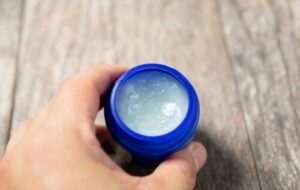 Most people have applied a vapour rub at some time in their life, or probably had one applied to them as a child. Rubbed onto the chest, back and throat to help with symptoms of a common cold, they are commonplace in most people’s weaponry against the cold virus, particularly with children. But how effective are these store-bought vapour rubs? They typically contain camphor oil that gives them their instantly recognizable smell, and which can impart some benefits but can also be problematic. And we won’t even talk about the other harmful chemicals (such as preservers, etc) that it probably contains which can have a negative impact on our internal health! According to a doctor we may also be wasting our money using these over the counter vapour rubs since, although they may give a sense of comfort, they do not actually improve ease of breathing or help to tackle the congestion. Worse still, studies have indicated that one such vapour rub actually has the opposite effect, increasing mucus and decreasing mucus clearance.
Most people have applied a vapour rub at some time in their life, or probably had one applied to them as a child. Rubbed onto the chest, back and throat to help with symptoms of a common cold, they are commonplace in most people’s weaponry against the cold virus, particularly with children. But how effective are these store-bought vapour rubs? They typically contain camphor oil that gives them their instantly recognizable smell, and which can impart some benefits but can also be problematic. And we won’t even talk about the other harmful chemicals (such as preservers, etc) that it probably contains which can have a negative impact on our internal health! According to a doctor we may also be wasting our money using these over the counter vapour rubs since, although they may give a sense of comfort, they do not actually improve ease of breathing or help to tackle the congestion. Worse still, studies have indicated that one such vapour rub actually has the opposite effect, increasing mucus and decreasing mucus clearance.
The good news is that homemade chest rubs are very easy to make. Try our natural recipe containing essential oils, it’s completely non-toxin and furthermore it works!
Recipe for a Natural Essential Oil Vapour Rub for the Fast Relief of the Common Cold
Pour the olive oil, coconut oil and beeswax into a heatproof glass bowl. Fill a saucepan, large enough to hold your chosen bowl, fill with about 5cm of water and place over a low heat. Gently place the bowl in the water and wait for the oils to melt so that you can stir and well combine the ingredients. When evenly mixed, remove from the heat and allow to cool a little. Add the essential oils and combine well using a wooden spoon and then pour into jars or pots. Apply topically to the chest, back or throat before bed, or as needed. Mixture will retain full benefits for at least six months. Do not apply near the eyes or mouth. Not recommended for babies.
Herbal Teas
Certain herbal teas can also be a wonderful complimentary treatment to your main source of symptom relief:
Lemongrass Tea for the Relief of the Common Cold
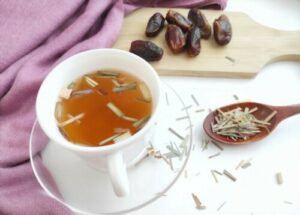 Containing vitamins A, B1 (Thiamine), B2 (Riboflavin), B3 (Niacin), B5 (pantothenic acid), B6 (pyridoxine), B9 (Folate), C, plus manganese, iron, potassium, magnesium, phosphorus, iron, magnesium, zinc, calcium, selenium, flavonoids, essential oils and phenolic compounds, lemongrass tea with its soft lemon taste and aroma is full of nutrients to help promote health. With antiviral and antibacterial properties it is a perfect beverage for those suffering from chest and sinus congestion and inflammation, and is also believed to be effective against staphylococci bacteria, more commonly known as strep throat. Working as an expectorant, this tea will loosen mucus in the throat and respiratory system and allow it to be dispelled, whilst simultaneously reducing pain. It protects against a cough and irritated throat by relaxing the trachea, thanks to its muscle relaxant and anti-inflammatory properties. Lemongrass is also effective at reducing. Antioxidants in the tea allow the white blood cells to travel through the body quicker to fight infection, whilst essential vitamins and nutrients boost the immune system. A further boost to the immune system is provided by sleep, and lemongrass is an exceptional aid to sleep as it promotes the release of the hormone serotonin, and has a sedative effect, eliciting a sense of calm and well being, and inducing a great night’s sleep. Meanwhile steam from the tea can help to improve the flow of air within the nasal cavity.
Containing vitamins A, B1 (Thiamine), B2 (Riboflavin), B3 (Niacin), B5 (pantothenic acid), B6 (pyridoxine), B9 (Folate), C, plus manganese, iron, potassium, magnesium, phosphorus, iron, magnesium, zinc, calcium, selenium, flavonoids, essential oils and phenolic compounds, lemongrass tea with its soft lemon taste and aroma is full of nutrients to help promote health. With antiviral and antibacterial properties it is a perfect beverage for those suffering from chest and sinus congestion and inflammation, and is also believed to be effective against staphylococci bacteria, more commonly known as strep throat. Working as an expectorant, this tea will loosen mucus in the throat and respiratory system and allow it to be dispelled, whilst simultaneously reducing pain. It protects against a cough and irritated throat by relaxing the trachea, thanks to its muscle relaxant and anti-inflammatory properties. Lemongrass is also effective at reducing. Antioxidants in the tea allow the white blood cells to travel through the body quicker to fight infection, whilst essential vitamins and nutrients boost the immune system. A further boost to the immune system is provided by sleep, and lemongrass is an exceptional aid to sleep as it promotes the release of the hormone serotonin, and has a sedative effect, eliciting a sense of calm and well being, and inducing a great night’s sleep. Meanwhile steam from the tea can help to improve the flow of air within the nasal cavity.
Note: Not recommended for pregnant or nursing mothers.
Bedouin Tea for the Relief of the Common Cold
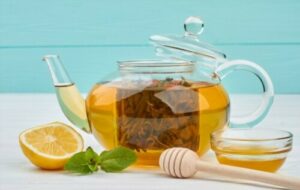 Made from the traditional bedouin herb habek/habaq (mentha longifolia, this ancient herb is traditionally used to treat colds and flu and many of its pharmacological activities and therapeutic indications have been confirmed by studies. It has antibacterial, antiviral and anti-inflammatory properties which help to fight clogged sinuses and loosen bronchial restriction due to the common cold. Meanwhile as an antispasmodic and a muscle relaxant it is able to soothe a sore throat and irritating cough. Habek also has properties to cause perspiration, thus relieving heat and body temperature, which may be beneficial for a cold or fever. In this case a stronger brew is recommended. Studies have proven that thymol and carvacrol, contained within habek are effective against staphylococcus aureus which can cause severe respiratory diseases in both the upper and lower respiratory tract, as well as the ears, nose and throat. Properties within the tea will also prohibit the release of certain chemicals which can aggravate severe nasal symptoms, plus provide relief from an itchy throat, and also boost immunity, in addition to combating a headache.
Made from the traditional bedouin herb habek/habaq (mentha longifolia, this ancient herb is traditionally used to treat colds and flu and many of its pharmacological activities and therapeutic indications have been confirmed by studies. It has antibacterial, antiviral and anti-inflammatory properties which help to fight clogged sinuses and loosen bronchial restriction due to the common cold. Meanwhile as an antispasmodic and a muscle relaxant it is able to soothe a sore throat and irritating cough. Habek also has properties to cause perspiration, thus relieving heat and body temperature, which may be beneficial for a cold or fever. In this case a stronger brew is recommended. Studies have proven that thymol and carvacrol, contained within habek are effective against staphylococcus aureus which can cause severe respiratory diseases in both the upper and lower respiratory tract, as well as the ears, nose and throat. Properties within the tea will also prohibit the release of certain chemicals which can aggravate severe nasal symptoms, plus provide relief from an itchy throat, and also boost immunity, in addition to combating a headache.
Did you know? Trivia regarding the common cold.
- More people visit the doctor for cold symptoms than any other condition.
- On average, healthy adults suffer from two or three colds per year, mostly between September and May.
- Young children can expect to average six to eight colds per year.
- The cause of the common cold was first identified in the 1950s.
- The earliest mention of the common cold, according to the listed symptoms, is in the Ebers papyrus, circa 1550 bc, which is one of the oldest maintained medical documents, and presented us with an extensive record of Egyptian medical history.
This year, if you should be unlucky enough to fall prey to the cold virus, don’t rely on questionable over the counter remedies, use these natural remedies to get back up on your feet in no time.
